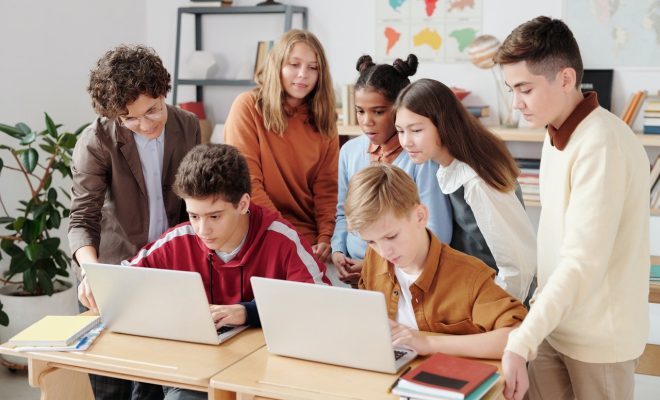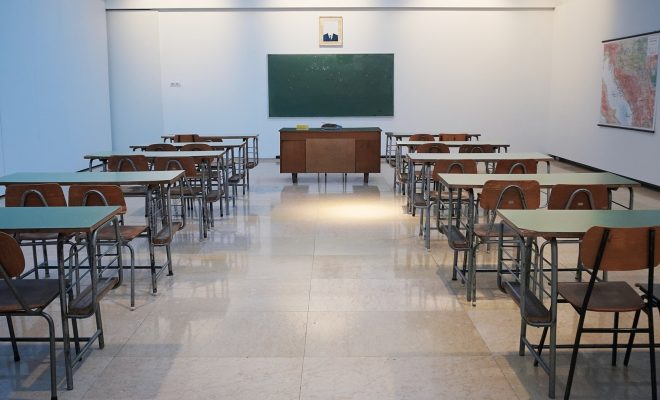What Robots Can Teach Kindergarteners

Young learners dive into STEM lessons—and discussions about the nature of humanity.
By Hannah DeRusha
What does it mean to be human? What does it mean to be a robot? These are the questions my kindergartners and first graders asked themselves this past year at the Acera Elementary School of Science, Creativity and Leadership in Winchester, Massachusetts. Concepts like these may sound challenging for the age group involved, but by breaking big ideas down into bite-sized applications, we can introduce young learners to a new way of thinking.
When I first brought a kit of customizable robots into my classroom, there were several learning areas that I hoped to engage:
- STEM instruction and critical thinking;
- Storytelling and creative thinking; and
- The philosophy behind robotics, to help my students better understand robots and the science and thought behind them.
To achieve this, we pursued hands-on engagement through open discussions, whimsical coding assignments, and experimental play with a small toy robot named KIBO.
If/Then and Critical Thinking
When we started, the initial interaction with our robots and their programing blocks was purely experimental; a sort of trial and error approach. I explained the basic concept to my students—that each block comes with a command, you put them together, scan them with the robot, and see what happens—then I simply let them experiment.
The lesson really came down to helping them develop the logical parts of their brain, to think about their decisions and how it might matter what order their commands came in. This opened the door for critical thinking for our students, inspiring them to think about the end result of the “if/then” statements they were creating. Their learning was almost subconscious, allowing them to focus on the fun of solving the problem at hand while developing crucial early development skills.
Once that foundation was laid, I tried to get my students to consider the idea of reverse engineering. “Think of the end result first,” I would tell them, “and then try and figure out how to get there.” To help encourage this new way of thinking, I would sometimes put a series of basic codes up on our projector and ask our kids to act out what they think the robot’s action would be. More often than not, they were surprised to see the actual result.
Robot Storytelling
Now that I had my students thinking critically about programming and the results of their actions, I wanted to broaden their understanding of robotics from the practical to the creative. We started with a story assignment in which the kids had to design their KIBO as the main character of a story that they came up with. They had to code their robot to act out the actions of the plot and think creatively about how to properly convey certain ideas. For example, if there was a point in their story when the sun came up, they could program their robots to turn on their lights when given a certain cue.
Robotics doesn’t need to be purely engineering. A large part of this assignment was the costume design. As part of our story lesson, our students designed and made outfits to help their robots better fit their story. KIBO is cute, but it doesn’t always look like a kindergartener’s idea of a main character, such as a unicorn or a submarine. Finding a unique way to represent elements of character and plot through these devices fed their creative problem-solving.
It’s amazing for our students to see their story come to life through the programming they’ve created. It allows them to realize, “I wrote this and now it’s coming off the page and into the real world.”
What Makes Us Human, What Makes Them Robots?
I’ve had some fairly philosophical discussions with my students, more than you might expect when thinking about kindergartners and first-graders. The truth is, kids are very interested in understanding the mechanics of the world around them, a fact that’s wonderfully conveyed through the study of daily devices such as smart technology, or in some cases—as we discovered—not-so smart technology.
Seeing ways in which sophisticated robots can fail at even the simplest of human tasks is eye-opening for my kids. They love watching videos of robots trying to open doors or falling over when they try to kick a soccer ball. It’s impactful, seeing how far robotics still needs to come. Without this input, our kids might think of robots as something magical and unexplainable, creatures that can do anything with no limits. Videos like these open them up to a more realistic and healthy understanding of technology and how it works in our lives.
I’ve noticed that my young students especially hang on to the “uncanny valley” element of robotics—what makes them not quite human and sometimes creepy. They’re very interested in the idea of robots becoming more like us, and we’ve had many discussions about whether or not it’s a good or a bad thing. These children wonder what the future of robotics is. Will they someday lose their creepiness and blend with human society? Is that something we should be looking forward to, or wary of?
In order to explore these concepts, we watched videos on how certain people are trying to program robots to show emotion. We asked ourselves if robots will someday be able to experience true emotions, and discussed the challenge of programing robots to mimic such complex feelings. An engineer would have to ask themselves, “What behavior do I want to make the robot do, and what codes are required to have the bot act that out?”
By asking these external questions, it’s almost impossible not to inspire some element of internal reflection. The more our children can understand what makes a robot a robot, the more they can think about what makes us who we are. Is there some element of human programming that exists? And how can knowing that allow us to better understand the world we live in?
Hannah DeRusha is a cross-classroom teacher at the Acera Elementary School of Science, Creativity and Leadership in Winchester, Massachusetts. She can be reached at [email protected].






